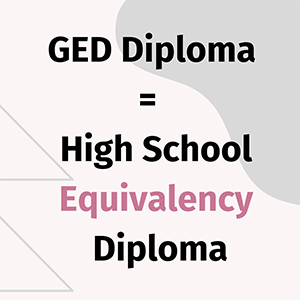For many people in the United States, completing secondary education is an important step toward career growth, higher education, and personal achievement. Two common paths to this milestone are earning a high school diploma or obtaining a GED (General Educational Development) credential. While both are recognized as proof of high school–level academic skills, they differ in structure, eligibility, and long-term implications.

What is a GED?
The GED is a set of standardized tests that measure proficiency in four subject areas: Mathematical Reasoning, Reasoning Through Language Arts, Science, and Social Studies. It is designed for individuals who did not finish traditional high school but want to demonstrate equivalent academic abilities.
Unlike high school programs that span several years, the GED can be earned after preparing for and passing these exams. Many choose this route for flexibility, especially if they are working, have family commitments, or need an alternative pathway to education.
What is a High School Diploma?
A high school diploma is awarded after completing a structured curriculum over four years, typically in grades 9 through 12. Students must meet credit requirements in core subjects such as English, math, science, and social studies, alongside electives.
High school education often includes extracurricular activities, sports, and social experiences that the GED route does not replicate. It also involves continuous assessment through assignments, quizzes, and exams rather than a single set of tests.
Key Differences GED vs High School Diploma
While both are respected, there are notable distinctions:
Time Commitment A high school diploma usually takes four years to complete, while the GED can be earned in a matter of months, depending on preparation time.
Learning Environment – High school offers in-person classes with teachers and peers, while GED preparation can be self-paced or through adult education centers.
Assessment Method – Diplomas are based on cumulative coursework and exams; GED credentials rely on passing standardized tests.
Recognition – Both are widely recognized by employers and colleges, though some institutions may prefer a diploma for certain programs or scholarships.
Choosing the Right Path
Deciding between a GED and a high school diploma depends on personal circumstances. Those who are already in high school and can complete it may find that the diploma route offers more opportunities for social development and academic breadth. Adults who left school early or need a quicker qualification often benefit from the GED option.
It is also worth considering your long-term goals. Certain careers, apprenticeships, or university programs may have specific preferences. Researching requirements before choosing can prevent obstacles later.
Understood GED vs High School Diploma? Next Steps
Whether you pursue a GED or a high school diploma, both can open doors to further education and career growth. The key is selecting the option that aligns with your timeline, lifestyle, and ambitions. At US Exam Prep, we provide targeted resources and real exam-style practice for the GED and other equivalency tests to help you achieve success on your chosen path. Start your preparation today and take the next step toward your future.
